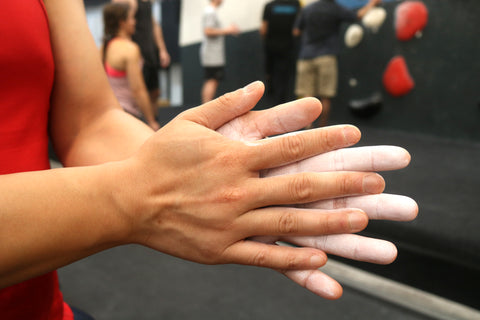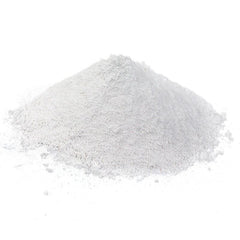 Let's talk about chalk! Aside from your climbing shoes, chalk is the most important piece of climbing gear. Our hands tend to get sweaty as we navigate the wall and can compromise the friction we need to hold on.
Let's talk about chalk! Aside from your climbing shoes, chalk is the most important piece of climbing gear. Our hands tend to get sweaty as we navigate the wall and can compromise the friction we need to hold on.
Climbing chalk can come in many shapes and sizes - blocks, loose powder, liquids and even creams. This article will give you an idea of what chalk you should invest in to complement your style of climbing.
TLDR;
- Loose climbing chalk is what most climbers and boulderers start off with.
- Climbers are then likely to upgrade to chalk balls because it doesn’t spill as easily.
- Liquid chalk provides longer lasting and better coverage, great for bouldering and means you chalk up less mid-climb.
- Coloured chalk is especially made to match outdoor rock colour to reduce the visibility of any residue.
Loose Chalk:

| Pros | Cons |
|
|
The curious white powder. Loose chalk can vary in texture from being a very fine powder to small crushable lumps. The texture doesn’t impact performance, it’s mostly a matter of preference (I prefer super fine chalk myself). Loose chalk is abundant as most climbers haven’t experimented with anything else and it is suitable for both bouldering and climbing.
Summary: Good for both climbing and bouldering.
Coloured Chalk:

| Pros | Cons |
|
|
A good alternative to white chalk for reducing environmental impact. Coloured chalk made specifically for Australian rock has only been made available in May 2021 by Redpoint Climbing. It doesn't solve all the problems that come with environmental impact, but it is a step in the right direction. White chalk marks are much more visible than coloured chalk that has been made to match local Australian sandstone.
Summary: Good for both climbing and bouldering outdoors.
Chalk Ball:

| Pros | Cons |
|
|
All the benefits of loose chalk in a convenient little fabric ball/sock. This is a choice method of chalking up for climbers as it has all the benefits of loose chalk without spilling everywhere. Some chalk balls are even refillable for that extra environmentally friendly bonus.
Summary: Great choice for climbers who would rather fondle their chalk rather than dip. Opt for refillable options if available.
Liquid Chalk:

| Pros | Cons |
|
|
Liquid courage in a squeezy bottle. When you see climbers blowing on their hands or waving them around like a polaroid picture, it’s because they are using liquid chalk. Liquid chalk coats the hands evenly and stays on longer than loose chalk. It also leaves behind less chalk on the rock and less chalk dust in the air (great news for indoor climbing walls). This type of chalk is great for bouldering and as a base layer for climbers so they won’t have to chalk up as often mid-climb.
Summary: Great grip for bouldering thanks to better coverage, and a dependable base layer of long lasting chalk for climbing long routes.
And the rest of the options…
Block chalk is a gymnastic staple but not convenient for chalking up mid climb as you’ll have to crush it up to make it usable. You now have loose chalk.
Chalk creams are thicker versions of liquid chalk. I’ve experimented with creating chalk creams but have found that they deposit too much chalk, which flakes off quite easily.
Resin powder. NO NO NO! It improves grip because it forms a sticky layer between your hands and the rock. Basically it’s cheating! Furthermore it creates a gunky layer on the rocks and holds which eventually becomes slick and glassy over time.








